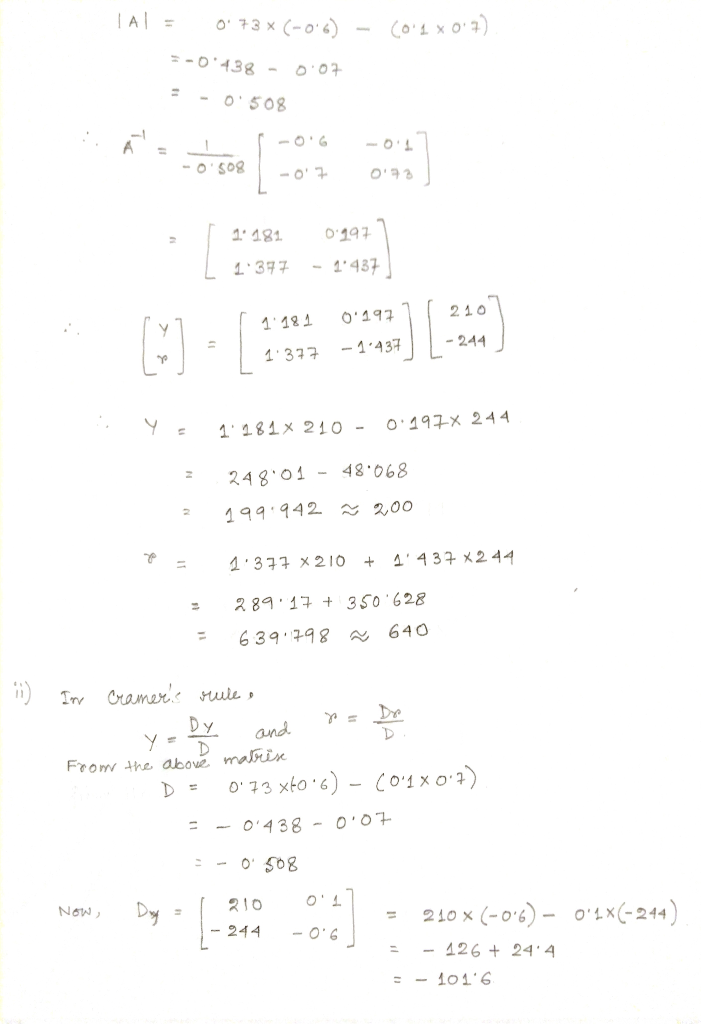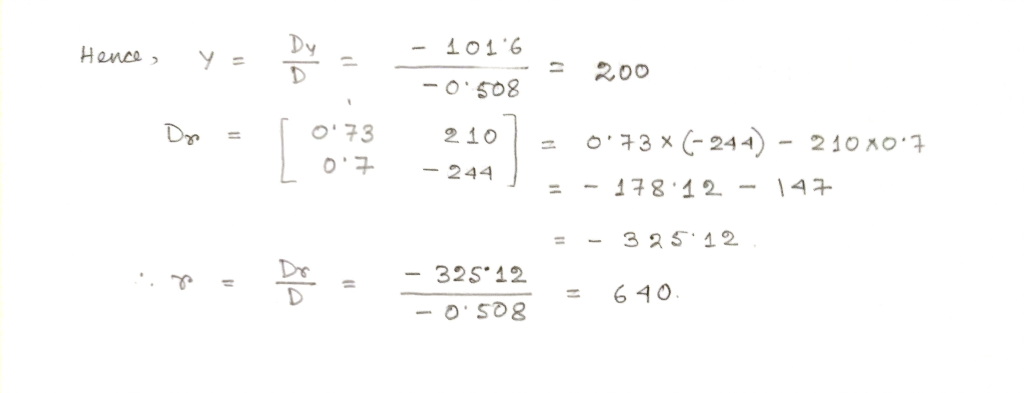Question
In: Economics
Suppose an inflationary economy can be described by the following equations representing the goods and money...
Suppose an inflationary economy can be described by the following equations representing the goods and money markets:
C = 20 + 0.7Yd
M = 0.4Yd
I = 70 – 0.1r
T = 0.1Y
G = 100 X = 20
Ld = 389 + 0.7Y – 0.6r
Ls = 145
where G represents government expenditure, M is imports, X is exports, Y is national income, Yd is disposable income, T is government taxes (net of transfer payments), I is investment, r is the rate of interest, C is consumption, Ld is money demand, and Ls is money supply.
i) Use the inverse matrix method to solve for the equilibrium level of national income and the equilibrium rate of interest in this economy. (Note: ½ of the marks in this part are given for the correct set up of the equations. Explain what you are doing, including how equilibrium is established in each market.)
ii) Now use Cramer’s rule to find your answer.
Solutions
Expert Solution
From the above equation, we form the equation for IS and LM curve. Then we would form a 2x2 matrix to solve the value of Y and r.
For IS curve, we establish that goods market is in equilibrium and in LM curve, we establish that the money market is in equilibrium.
Now, if we consider the matrix form as, AX = C
then multiplying both side by A-1, we can get the solution for X.
i.e., A-1. AX = A-1. C
or, X = A-1. C
this is how we can solve the equations with the help of inverse matrix.



Related Solutions
Suppose an inflationary economy can be described by the following equations representing the goods and money...
Suppose the goods-market of the economy of Macronium is described by the following equations Consumption: C...
These are the equations for the goods, and money market in a hypothetical economy: C =...
Suppose that the closed economy of an island H is described by the following equations: GDP...
Consider an economy described by the following equations:
Suppose the goods market in an economy is represented by the following equations. C = 500...
A classical economy is described by the following equations: ?? = 150 + 0.8(? − ?)...
Assume the money sector can be described by the following two equations: md = (1/4)Y...
) Consider an economy described by the following equations: Real Sector &n
Consider an economy described by the following equations: Real Sector &n
- The general ledger of the Karlin Company, a consulting company, at January 1, 2021, contained the...
- In Linux Professional: PE15 (CH) 1 – why is the max RAM for a 32-bit OS...
- Use the following words to script that mirrors a conversation that you might have with a...
- I need C++ code Given the complete main() function, partial playlist class header playlist.h, and playlist.cpp,...
- "Elizabeth Egbert owns a galvanizing plant. Customers bring in their fabricated steel products (like light poles,...
- Write a general-purpose program with loop and indexed addressing that adds 12h to 0th, 3rd ,...
- Exercise 1: Write a C program that does the following tasks: a. Declare a structure called...
 Rahul Sunny answered 1 month ago
Rahul Sunny answered 1 month ago